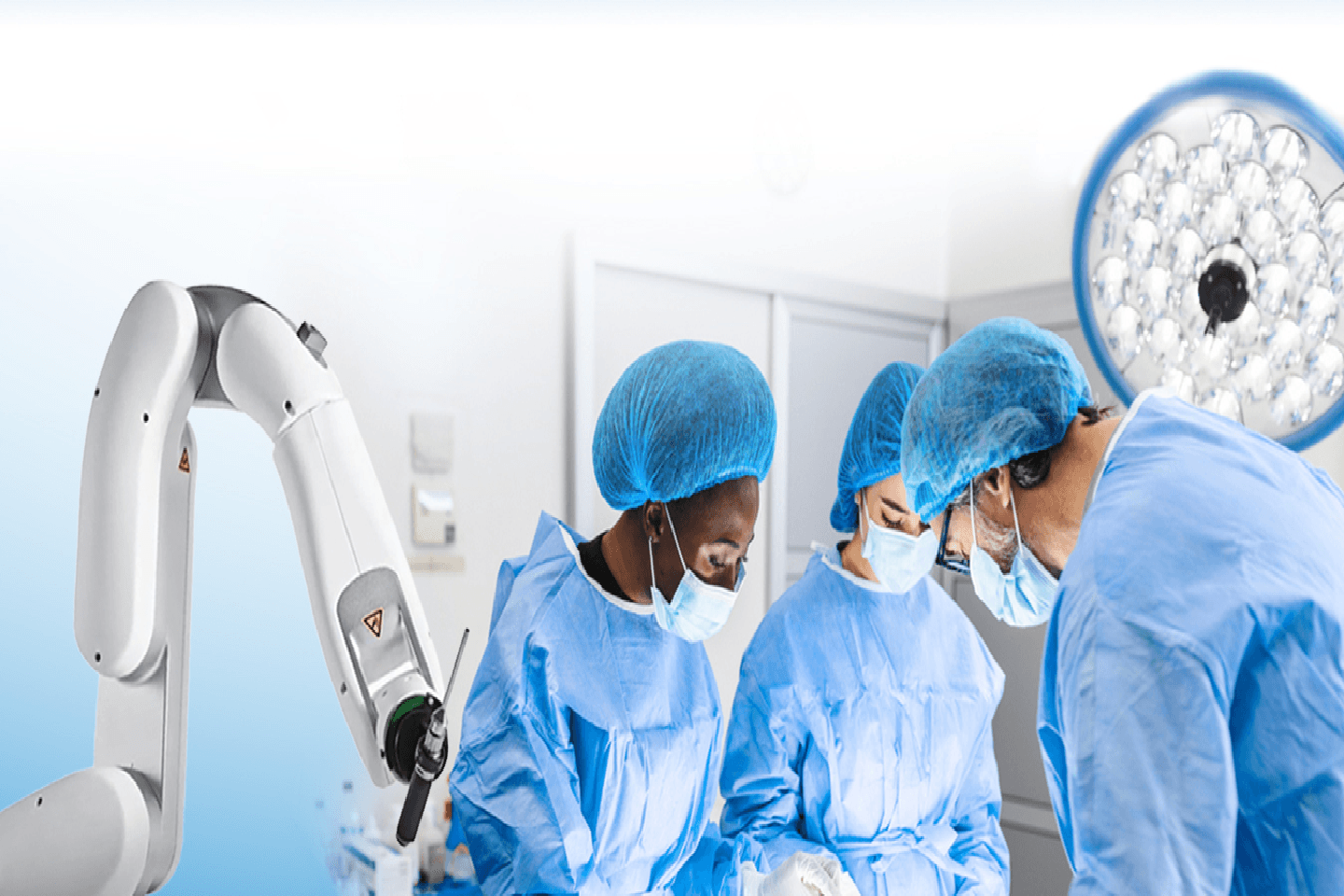
Artificial Intelligence and Robotic Surgery
Introduction
Whether you want to find your way to your destination with voice navigation, instruct a voice assistant to carry out your task through voice command, identify misspelled words through the auto-correct feature in your mobile, unlock your mobile using the Face ID unlock feature, or switch to autopilot tool of a fully autonomous self-driven vehicle for a stress-free drive, Artificial Intelligence (AI) has made everything possible. AI is extensively used with varying degrees of sophistication and is gradually becoming an indispensable part of every industry and even our private lives. And be noted that healthcare is no exception to this. Artificial Intelligence (AI) has touched upon a broad spectrum in healthcare sector. There is considerable deployment of intelligent technologies using AI and Machine Learning (ML) techniques in healthcare. These advancements in healthcare have been instrumental in developing patient-centric healthcare systems enabling prompt, cost-effective, efficient, and reliable solutions for prognosis, prevention, medication, and treatment.
Here, we shall talk about what AI is, the use of AI, and its benefits in healthcare, with more emphasis on its contribution to robot-assisted Joint replacement surgery.
What is AI?
Simply put, AI refers to the ability of a computer or computer-controlled robotic device to perform human tasks requiring complex human qualities like the ability to reason, discover meaning, generalize, or learn from experiences. AI thus means the simulation of human intelligence in machines through programming to make them think and take actions like humans. AI is a tool to improve precision and assist humans and it’s not a replacement of human capabilities.
Use of AI in healthcare
The role of various applications of AI and AI-assisted processes in the healthcare industry has brought a revolution in the traditional health systems, be it from drug innovation or exploration, diagnosis, patient-centric personalized treatment, and medication, robot-assisted surgeries, to administrative applications like clinical documentation, bills and claims processing, medical records management.
In short, the use of AI in healthcare has resulted in increased efficiency in prognosis, diagnosis, and treatment, safer surgeries, cost-effective business propositions, efficient patient care, and timely and hassle-free sharing of information.
AI and Orthopedics
Orthopedics, among all branches of medical specialties, is an area where surgeons have an array of new tools and assistants in the form of robots. Even though research is still around robotic replacement surgery's success rate and superiority, the tech adoption has been very swift and global. Very soon, we will see exponential growth in robotic-assisted replacement surgeries that will outnumber manual knee replacement surgeries in a very short time. Patient concerns are mainly related to the procedure, recovery time, safety, costs, etc.
Impact of AI on Joint Replacement Surgery
Joint replacement is a specialized procedure where artificial joints are implanted in patients as a solution for joint damage. Some of the most common joints that are replaced include the hip, knee, and ankle joints. Artificial joints can be made from various materials, including metal alloys, plastic, and bio-implants like ceramic and polyethylene.
Robotic surgery is a revolutionary form of surgical intervention. AI-programmed robot assists surgeons in joint replacement surgery and its mobility and flexibility help surgeons perform the most complex procedures efficiently and with maximum accuracy. Less pain and scarring, faster recovery, and reduced blood loss are some of the many advantages of Robotic surgery, it being a minimally invasive procedure.
The operative procedure, using robotic technology, is connected to hardware calibrated with a handpiece. Surgeons perform surgery through minimally invasive means. This mode of surgery limits blood loss to a minimum. The active robotic sensors map the location of joint to be replaced and proceed autonomous resection with utmost precision. Also the machine alerts the surgeon of any sudden movement and stops automatically to maintain safety of procedure. The procedure leaves nothing to chance, and the degree of accuracy is 100%.
Image based robotic joint replacement system use 3D CT scan of patient’s bone and the same is used by surgeon in preplanning for the surgery as per the patient’s anatomy. Post preplanning, the data is fed in the robotic arm to execute the precise resection of the defective joint. This leads to fewer mistakes and less damage to the soft tissues of the knee, as well as betters the implant alignment and corrects any flexion-extension gap and gap asymmetry. The fact that it predicts patient outcomes is an exciting prospect for both the patient and the surgeon. It promotes efficiency and faster healing times, improves precision and accuracy, personalizes patient care, and reduces complications. AI helps in surgical decision-making and eliminating risk factors and human-driven errors.
Conclusion
Robot-assisted surgeries are a breakthrough in healthcare, successfully overcoming the limitations of traditional surgery. The surgeon does not have to plan the surgery on the operating table but can plan it beforehand with the requisite virtual tools and applications at his disposal with precision. AI can significantly improve the treatment of joint damage by automating a larger part of the process, allowing doctors to concentrate exclusively on the diagnosis and treatment. AI can use data to help select the best type of joint replacement for each patient. This would help reduce the number of patients who receive incorrect treatment, helping to improve the overall quality of care. AI-assisted robotic surgery with added efficacy, new efficiencies, precision, and accuracy to the surgical procedure, ensuring less painful, prompt, and faster recovery, would pave the way for improving the lives of millions.
CUVIS from MERIL …uplifting life with active robotics
CUVIS Joint robot system for joint replacement surgery is India's first fully active Robotic Surgery System. The system is the most advanced surgical equipment capable of 3D pre-planning, precise cutting and safe to provide consistent and precise surgery results. It is a user-friendly surgical robot providing simplicity, flexibility, accuracy, and safety at its best while in use. CUVIS Joint robot system is a step towards a smarter future offering precision and consistent and predictable results.



